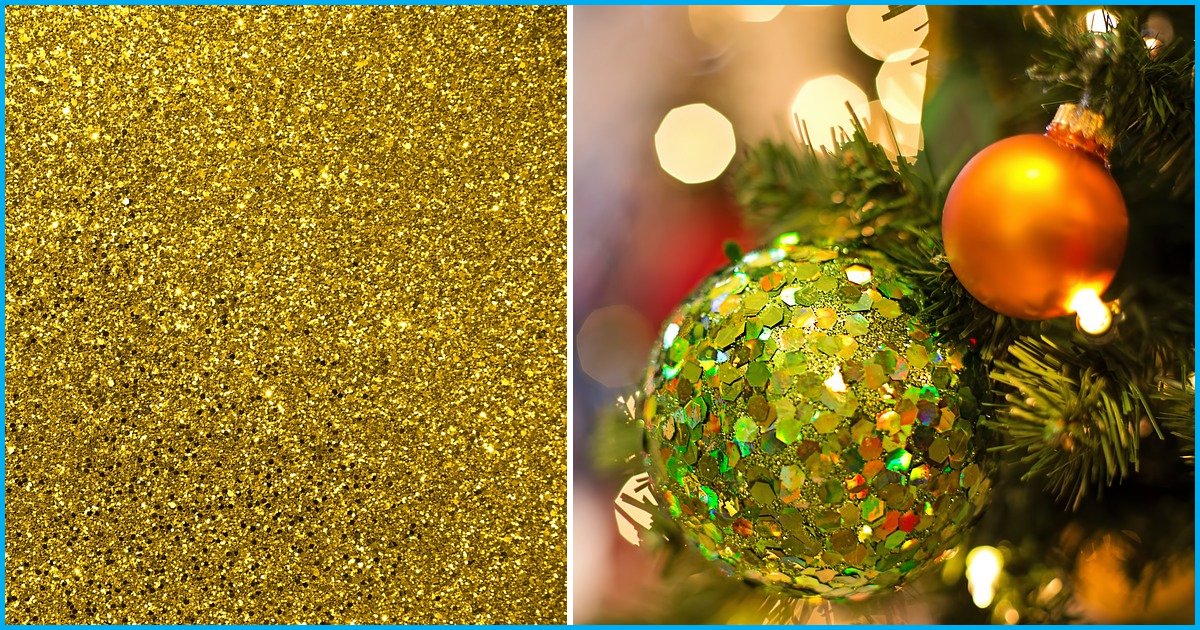
Why Do Scientists Think That Glitter Should Be Banned? All You Need To Know About It And Its Harmful Effects
Glitter has harmful environmental impacts which have led some scientists to call for it to be banned, said a report by the Independent. This glistening decorative powder might seem harmless but it poses a huge threat to wildlife.
Glitter is made of plastic and the small size of its particles make it a potential ecological hazard, particularly in the oceans. Dr Trisia Farrelly, an environmental anthropologist at Massey University says, “Glitter should be banned because it is microplastic.”
Why is microplastic harmful?
Microplastics are fragments of plastic which is less than 5 millimeters in length. Their small size makes them an appealing food for marine animals and fishes and later it ends up on our plates. Microbeads are also another type of microplastic which is added as an exfoliant to health and beauty products, such as some cleanser and tubes of toothpaste. These tiny particles easily pass through water filtration systems and end up in the ocean and big lakes, thereby posing a threat to aquatic life. A ban on microbeads will come into force in the UK next year after scientists and campaigners have made the devastating impact clear.
All marine animals from planktons to whales have been documented eating plastic. This often has fatal consequences; microplastics can end up inside us when we consume seafood. A study led by Professor Richard Thompson reported that plastic was found in one-third of fishes that was caught in the UK. Some experts say that the number of microplastics in the world’s ocean is upto 51 trillion fragments in total. It has caused concern among scientists who are keeping a close eye on pollution effects on fishes.
Richard Thompson, Professor Marine Biology at Plymouth University said, “I was quite concerned when somebody bought my both daughters some shower gel that had glitter particles in it. Those tiny pieces of plastic will potentially end up in the environment.”
Historically, glitter was made of mica rock particles, glass and even crushed beetles. Modern-day glitter, however, is made from metals, while fine-milled cosmetic glitter is made from polyester, foil and plastics.
Glitter is often added to rinse-off cosmetics, of late. Crafting glitter is not included in the ban which UK plans to impose next year. The ban is on glitter being used in cosmetic products only. There are eight million tonnes of plastic going into the oceans each year in form of microplastic. Dr Trisia Farrelly says, “These are literally ‘down the drain products’. You put it on, you wash it off. These are meant to be disposed of. It’s a no-brainer for glitter and microfibres, we have to stop producing them.”
Effects on human health
Cosmetic glitter made of bonding aluminium with polyethene terephthalate (PET) impact sensitive ecosystems. This is because PETs leach out endocrine disrupting chemicals which when eaten by marine life, can cause adverse developmental, reproductive, neurological and immune effects. Microplastics have been seen to significantly impact the reproduction rates of oysters.
It has a domino-like effect on the food chain, for the sheer volume of microplastics consumed by the seafood-loving human beings is staggering. A study by the University of Ghent found out that Europeans who eat shellfish can consume as much as 11,000 microplastics per year. There are a lot of long-term implications from glitter passing through the food chain.
A report by the Ecowatch says that PETs attract and absorb persistent organic pollutants and pathogens adding an extra layer of contamination. Those who are at the bottom of the food chain like molluscs, sea snails, marine worms and plankton consume pathogen or pollutant-carrying particles of glitter, these tiny poison pills can concentrate in toxicity as they move up the food chain, all the way up to our dinner plates. When they enter the guts, the pathogens and toxins are easily taken up. Nick Mallos, Director Ocean Conservancy’s Trash Free Seas Program said, “At the rate, we are going, there could be one pound of plastic for every three pounds of finfish in the ocean in the next ten years.”
Sherri Mason, a professor at the State University of New York at Fredonia has described plastics as being “ubiquitous in the air, water and the seafood we eat, the beer we drink, the salt we use – plastics are everywhere. It has also been found in honey”. Microplastics have made their way into 83% of the tap water samples in more than a dozen countries including India, France and Germany. The US was at the bottom of the aforementioned list of countries with microplastic fibres appearing in 94% of samples. Microfibres comprise a fraction of the global plastic pollution problem. Mallos further added, “By raising awareness of the issue of ocean plastic, we can curb the flow through reduced consumption, improved waste management and innovative product and material solution.”
The Logical Indian Take
The Logical Indian urges all its community to stop using glitters in any form. The community members should stop using cosmetics that have suspended glitter in it. These tiny bits of plastic will go down the drain and end up in the ocean, thereby posing a potent threat to the marine ecosystem. Microplastics can pollute marine environments, leach chemicals into the water and pose harm to marine life if ingested. These microplastic bits are not biodegradable and they will clog up waterways as well. The Logical Indian also urges the Indian government to follow the footsteps of UK and impose a ban on the use of glitter in cosmetics. It is always good to use eco-friendly products which will prove beneficial for us in long-term.
Also read,
Countries Are Banning Micro-Beads From Household Products, Know About It
 All section
All section













